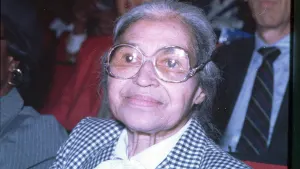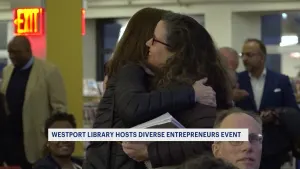‘Little Liberia’ – once a haven for escaped slaves – marks 200 years in CT city
This year marks the 200th anniversary "Little Liberia" – a community on the South End of Bridgeport that was home to free Blacks who escaped slavery.
•
Feb 26, 2021, 6:21 PM
•
Updated 1,709 days ago
Share:
More Stories
0:45

Bridgeport church celebrates the importance of 'Divine Nine' fraternities and sororities
251ds ago1:44

Vendor fair at UConn Stamford Library highlights Black entrepreneurs
259ds ago0:58

Harriet Tubman's story inspires new generation
265ds ago2:34

2 exhibits celebrate Black History Month at the New Haven Museum
276ds ago
Learn about 16 Black women who led the fight against social injustice
600ds ago0:42

Westport Library holds event for diverse entrepreneurs
611ds ago0:45

Bridgeport church celebrates the importance of 'Divine Nine' fraternities and sororities
251ds ago1:44

Vendor fair at UConn Stamford Library highlights Black entrepreneurs
259ds ago0:58

Harriet Tubman's story inspires new generation
265ds ago2:34

2 exhibits celebrate Black History Month at the New Haven Museum
276ds ago
Learn about 16 Black women who led the fight against social injustice
600ds ago0:42

Westport Library holds event for diverse entrepreneurs
611ds agoThis year marks the 200th anniversary "Little
Libera" – a community on the South End of Bridgeport that was home
to free Blacks who escaped slavery.
Today, a pair of rickety homes are what remain of the Mary
& Eliza Freeman Houses. Marisa Tisdale, of the Mary & Eliza Freeman
Center, says it has been her mission to bring this “holy grail” of undiscovered
Black history out of the shadows and into the light.
"When I feel defeated and overwhelmed, I think about
Mary and Eliza, who lived in these houses and this entire community and had
hope and aspirations and didn't give up," she says
Mary & Eliza Freeman were two sisters centuries ahead of
their time and spoke out about being part of the nation.
“What they basically did is set up a planned community – a
sanctuary settlement that helped Native Americans who had been displaced and
also people who were escaping slavery have a place to live," says Tisdale.
The 12-block settlement, consisting of about 30 structures,
came to be called Little Liberia, or “free land.” Tisdale says that the
community was filled with empowered women who started businesses while their
men were living at sea.
She says Mary Freeman eventually sold the land to the
railroad, which is now Metro-North railyards.
“She was very successful and savvy as a businesswoman and
when she died, the only person who had more money than she did in Bridgeport
was P.T. Barnum," says Tisdale.
Plans are in the works to turn the Mary & Eliza homes
into a museum and community center.
More from News 12
1:34

‘Seems like yesterday.’ Bridgeport couple celebrates 70 years of marriage
2:28

Asian Pacific American Heritage Month: Tammy Nguyen showcases her Easton studio

Send us your positive story ideas!
2:14

Event raises funds for beloved Stamford resident with ALS
2:09

Greenwich teen's nonprofit holds 1st annual golf club giveaway
5:31
